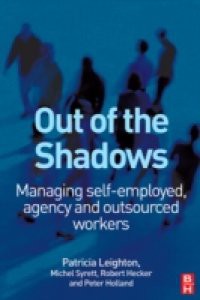Over half of all people working on behalf of any given organization are typically not their own employees. Some are freelance contractors working in their own right. A significant proportion is employed to provide these services by another firm, under agency or outsourcing service agreements. The services they perform under these agreements are often vital in supporting the organization's customer relationships, reputation and brand identity. Yet, remarkably, little attention has been paid to how these 'non-employees' are managed, motivated and meaningfully engaged. Management protocol generally sees them as outside the organization's remit or control. The law paints them as victims. This ground-breaking book challenges both these assumptions. Through a combination of pioneering legal analysis and rigorous case-study research, it demonstrates that non-employees are often the organization's most important hidden resource. Patricia Leighton and her collaborators highlight the limited good practice that is available, based on examples in large corporations, public sector organizations and smaller firms in a variety of countries. More importantly she clearly sets out the issues and imperatives employers should address, supported by new management concepts and models of effective practice developed specifically for the book. Far from being victims, she argues, non-employees often choose flexible working patterns for their own intrinsic ends and have ambitions, career aspirations and workplace needs that can be responded to and exploited by forward-looking employers. "Looking at the role they now play, these people are no longer marginal, atypical or peripheral as they are still termed and regarded by both legal and management practitioners. They are, however, still in the shadows in terms of the literature available on how best to develop and motivate them. This book aims to rectify this."* Highlights and examines the implications of relevant case-law * Incorporates recent research and regulation from across Europe * Illustrates how core HR functions can build flexible working patterns into an international or cross-boundary workforce development strategy

